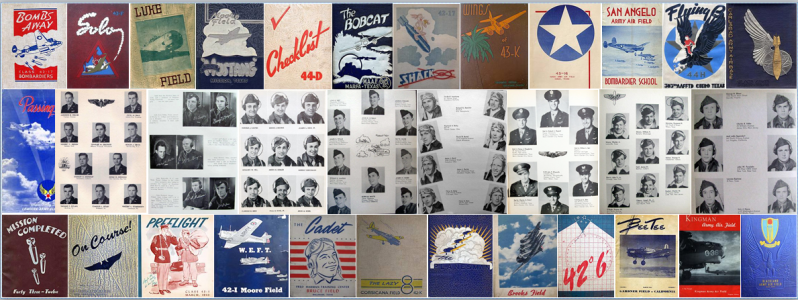
While researching Class Books sometimes familiar faces are found. Below please find a small collection of these faces.
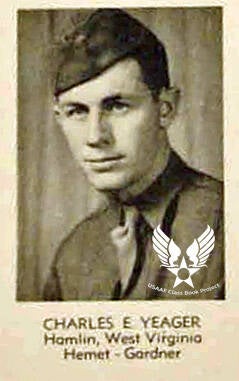


Charles 'Chuck' E. Yeager
From Hamlin, West Virginia.
Yeager graduated with Class 43-C at Luke Field, Arizona and the above photograph was sourced from that Class Book.
His Primary Flight Training took place at Hemet-Ryan Airfield, Riverside County, California.
Basic Flight Training took place at Gardner Field, Kern County, California.
Brigadier General Charles Elwood Yeager, February 13, 1923 – December 7, 2020) was a United States Air Force officer, flying ace, and record-setting test pilot who in October 1947 became the first pilot in history confirmed to have exceeded the speed of sound in level flight. Yeager was raised in Hamlin, West Virginia. His career began in World War II as a private in the United States Army, assigned to the Army Air Forces in 1941. After serving as an aircraft mechanic, in September 1942, he entered enlisted pilot training and upon graduation was promoted to the rank of Flight Officer (the World War II Army Air Force version of the Army's Warrant Officer), later achieving most of his aerial victories as a P-51 Mustang fighter pilot on the Western Front, where he was credited with shooting down 11.5 enemy aircraft (the half credit is from a second pilot assisting him in a single shoot down). On October 12, 1944, he attained "ace in a day" status, shooting down five enemy aircraft in one mission.
(This text and the upper right photograph were sourced from Wikipedia).
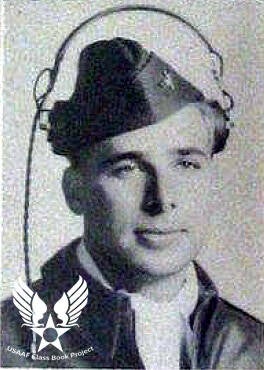
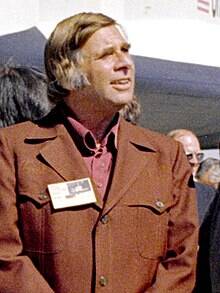

Eugene 'Gene' Wesley Roddenberry
From Los Angeles California.
Graduated with Pilot Class 42-G at Goodfellow Field, San Angelo, Texas.
Eugene Wesley Roddenberry Sr (August 19, 1921 – October 24, 1991) was an American television screenwriter, producer, and creator of Star Trek: the Original Series. Born in El Paso, Texas, Roddenberry grew up in Los Angeles, where his father was a police officer. Roddenberry flew 89 combat missions in the Army Air Forces during World War II and worked as a commercial pilot after the war. Later, he followed in his father's footsteps and joined the Los Angeles Police Department, where he also began to write scripts for television.
(This text and the upper middle photograph were sourced from Wikipedia).
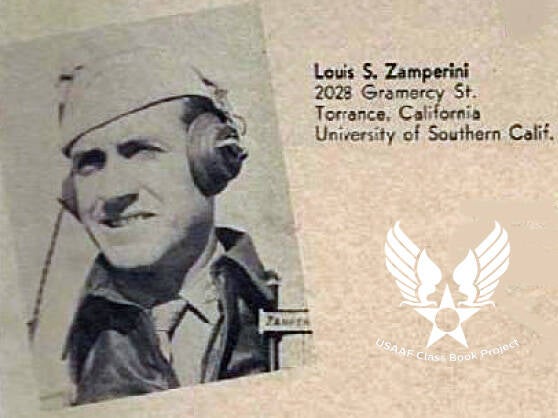

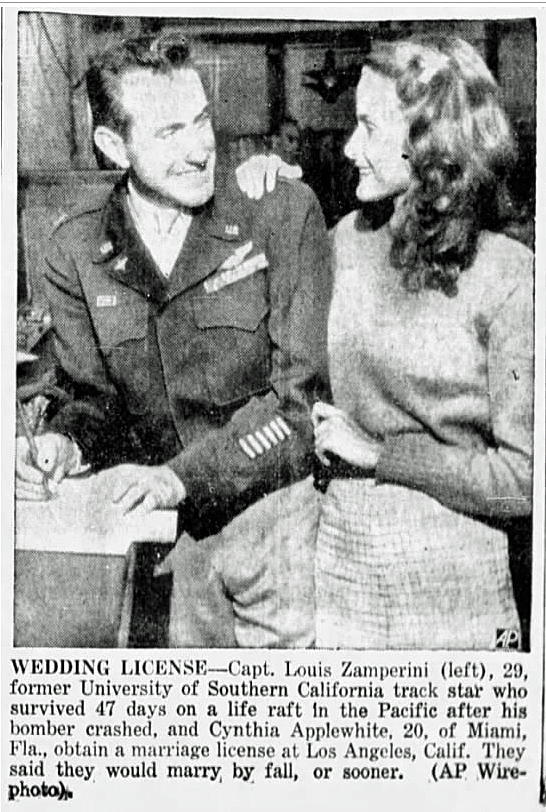
Louis S. Zamperini
From Torrance, California.
Graduated as a bombardier with Bombardier Class 42-11 after training at Midland Army Air Field, Texas
Louis Silvie Zamperini (January 26, 1917 – July 2, 2014) was an American World War II veteran, an Olympic distance runner and a Christian Evangelist. He took up running in high school and qualified for the United States in the 5,000 m race for the 1936 Berlin Olympics, finishing 8th while setting a new lap record in the process.
Zamperini was commissioned in the United States Army Air Forces as a lieutenant. He served as a bombardier on B-24 Liberators in the Pacific. On a search and rescue mission, his plane experienced mechanical difficulties and crashed into the ocean. After drifting at sea on a life raft for 47 days, with two other crew mates, Zamperini landed on the then Japanese Marshall Islands and was captured.
He was taken to a total of four different prisoner of war camps in Japan, where he was tortured and beaten by Japanese military personnel—specifically including Mutsuhiro Watanabe—because of Zamperini's status as a famous Olympic runner. He was later taken to a new prison camp at a coal factory, and after much hardship, he was finally released. Following the war he initially struggled to overcome his ordeal, afflicted with post-traumatic stress disorder.
He later became a Christian evangelist with a strong belief in forgiveness. From 1952 onward, he devoted himself to at-risk youth. Zamperini is the subject of three biographical films: Unbroken (2014), its sequel Unbroken; Path to Redemption (2018), and Captured by Grace (2015). (This text and the lower left photograph were sourced from Wikipedia).


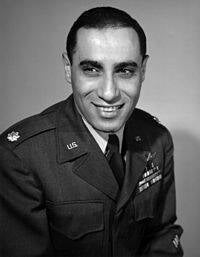
James Jabara
From Wichita, Kansas.
The two class book photographs above were sourced from Pilot Class 43-H, Bruce Field, Ballinger, Texas and 43-I Moore Field, Texas.
James "Jabby" Jabara (10 October 1923 – 17 November 1966) was the first American and United States Air Force jet ace. Born in Oklahoma, he lived in Kansas where he enlisted as an aviation cadet at Fort Riley after graduating from high school. Jabara attended four flying schools in Texas before he received his pilot's wings and was commissioned as a second lieutenant. Jabara flew two tours of combat duty in Europe during World War II as a North American P-51 Mustang pilot, and scored 1.5 air victories against German aircraft.
Jabara flew his first jet aircraft in 1948, the USAF Lockheed F-80 Shooting Star before transitioning to the USAF North American F-86 Sabre. Jabara used this aircraft to shoot down multiple Soviet-built MiG-15 jets during the Korean War. He achieved his first confirmed air victory of the war on 3 April 1951. A month later he was credited with his fifth and sixth victories, making him the first American jet ace in history. He eventually scored 15 victories, giving him the title of "triple ace". Jabara was ranked as the second-highest-scoring U.S. ace of the Korean War. He received the Distinguished Service Cross,Silver Star, Distinguished Flying Cross, Air Medal, and the British Distinguished Flying Cross for his accomplishments in combat.
Jabara next held a series of commands at various Air Force bases across the United States. He flew the Lockheed F-104 Starfighter and later the Convair B-58 Hustler. In 1966, while on leave from service in Vietnam, Colonel Jabara was traveling with his family in two cars to their new home when his daughter crashed the car she was driving and he was riding in, killing them both. They were buried together at Arlington National Cemetery. In recognition of his contributions to military aviation, an airport outside of Wichita, Kansas was named in his honor. Each year the United States Air Force Academy alumni association bestows the Jabara Award upon an Academy graduate whose aerospace accomplishments demonstrate superior performance.
(This text and the upper right photograph were sourced from Wikipedia).
Robert J. Meder
From Lakewood, Ohio
Graduated with Pilot Class 41-E, Brooks Field, Texas.
On 18 April 1942, airmen of the US Army Air Forces, led by Lt. Col. James H. Doolittle, carried the Battle of the Pacific to the heart of the Japanese empire with a surprising and daring raid on military targets at Tokyo, Yokohoma, Yokosuka, Nagoya.
One of the members of crew #6 was Lt Robert J. Meder, the co-pilot in the Lt D.E. Hallmark crew.
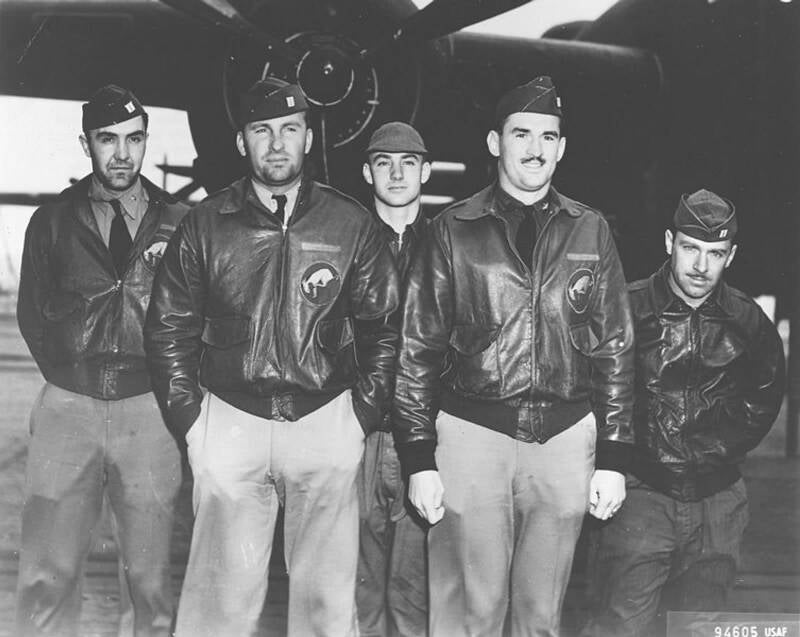
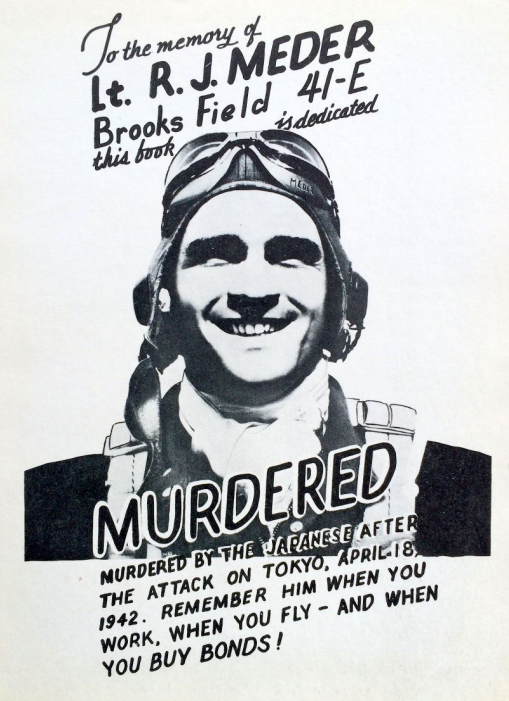
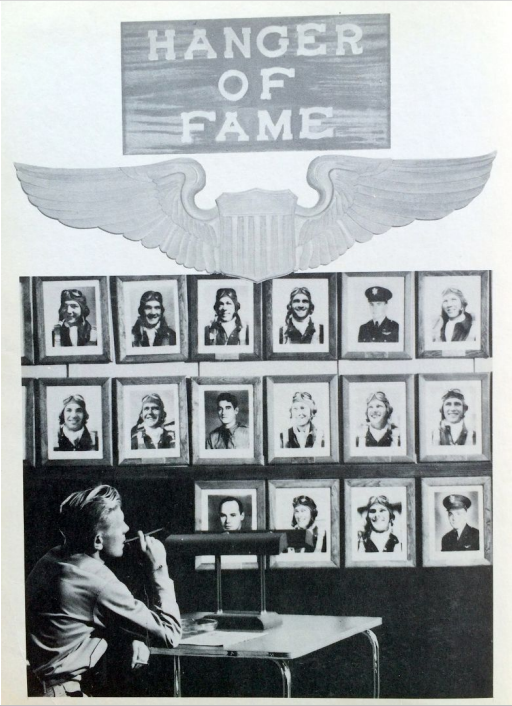
Crew #6 dropped their bombs on a steel mill north of Tokyo. Lt Hallmark was forced to ditch their aircraft (#40-2298 / 'The Green Hornet') off the Chinese coast due to fuel starvation. The engineer and bombardier drowned and three survivors of the crew were eventually taken POW by Japanese soldiers. Only Lt Nielsen, the navigator survived the war.
Lt Robert J. Meder received part of his pilot training at Brooks Field in Texas graduating with class 41-E. When news of his death reached the USA he was added to the 'Hanger of Fame' at Brooks Field. His portrait was also added to subsequent editions of the Pilot Class books.
Robert J. Meder died in captivity in December 1943 in Nanking POW camp. He was cremated and after the war his ashes were recovered and buried at Arlington National Cemetery, section 12, grave 159. In the above group photograph Lt Meder is 2nd from right.

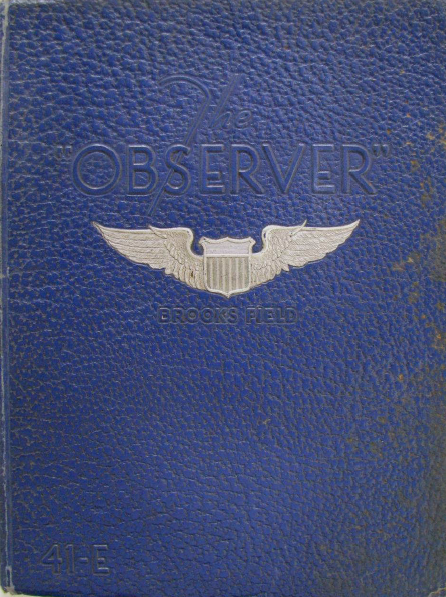
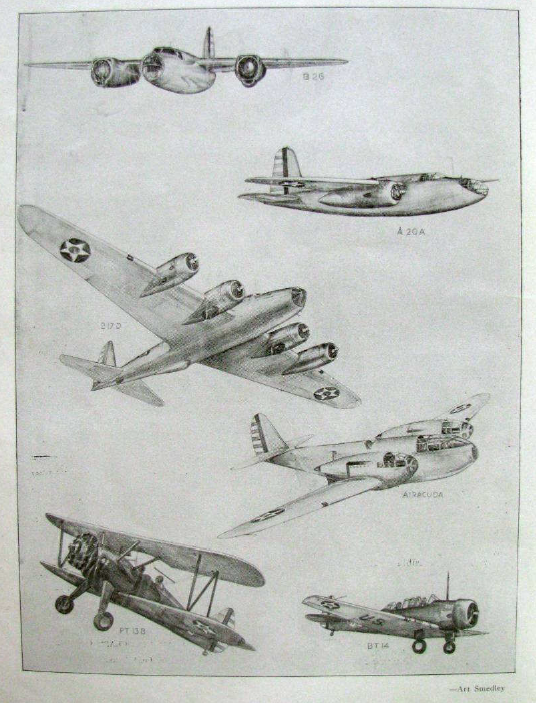
The above photographs were sourced from Pilot Class 41-E, Brooks Field, Texas.
RICHARD I. BONG, flight instructor, Pilot Class Book 42-D, Luke Field, Phoenix, Arizona.
Richard Bong, recipient of the Medal of Honor, was America's highest scoring fighter pilot and he was credited with no less than 40 'air victories' (better known as 'kills' in pilot's language). Between January and May 1942 Richard Bong was a flight instructor at Luke Field. On the 6th of August 1945 (the day that the first atom bomb was used over Hiroshima, Japan) he was killed in a test flight.
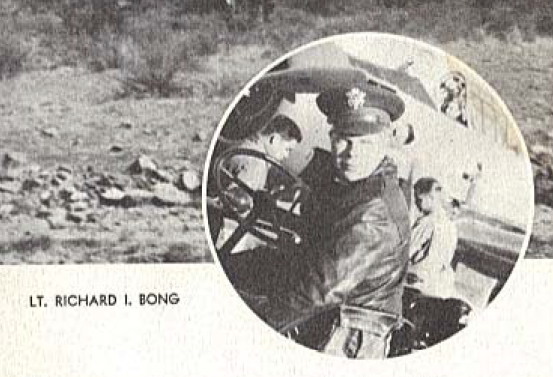
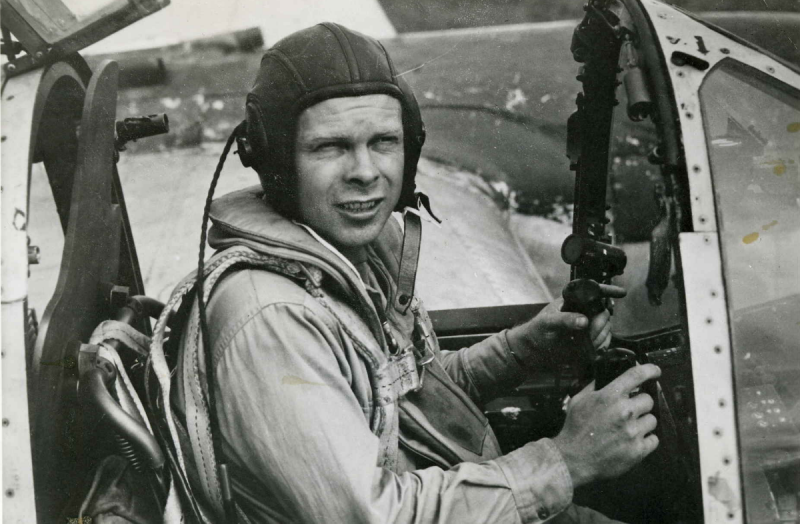
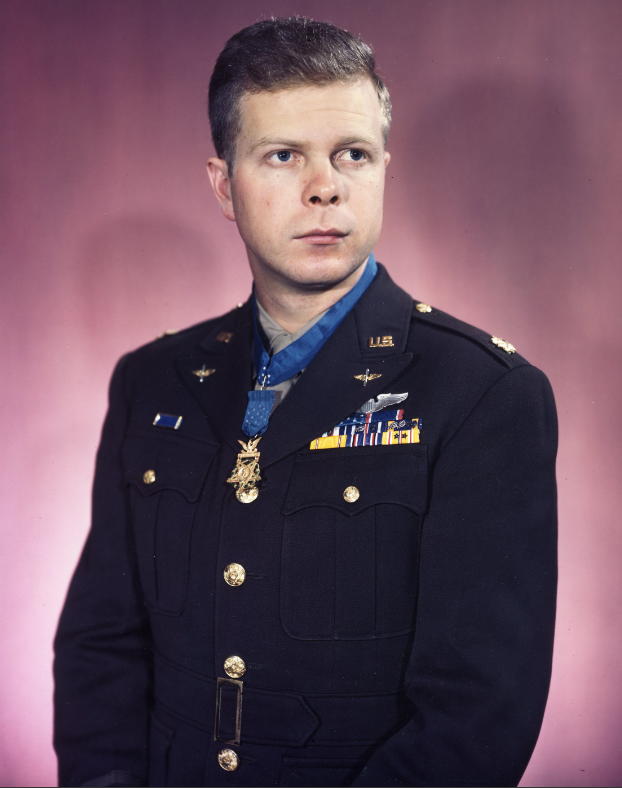
Richard "Dick" Ira Bong (September 24, 1920 – August 6, 1945) was a United States Army Air Forces major and Medal of Honor recipient in World War II. He was one of the most decorated American fighter pilots and the country's top flying ace in the war, credited with shooting down 40 Japanese aircraft, all with the Lockheed P-38 Lightning fighter. He died in California while testing a Lockheed P-80 jet fighter shortly before the war ended. Bong was posthumously inducted into the National Aviation Hall of Fame in 1986 and has several commemorative monuments named in his honor around the world, including an airport, two bridges, a theater, a veterans historical center, a recreation area, a neighborhood terrace, and several avenues and streets, including the street leading to the National Museum of the United States Air Force in Dayton Ohio. (Wikipedia). The two upper right photographs were sources via www.cmohs.org


Reactie plaatsen
Reacties